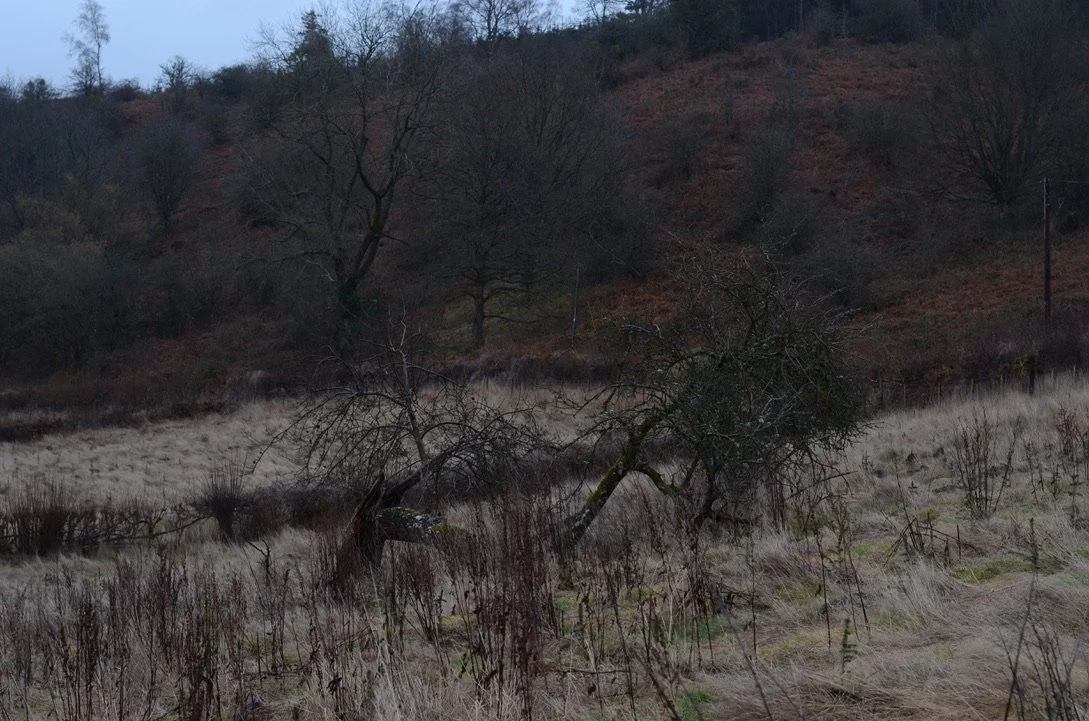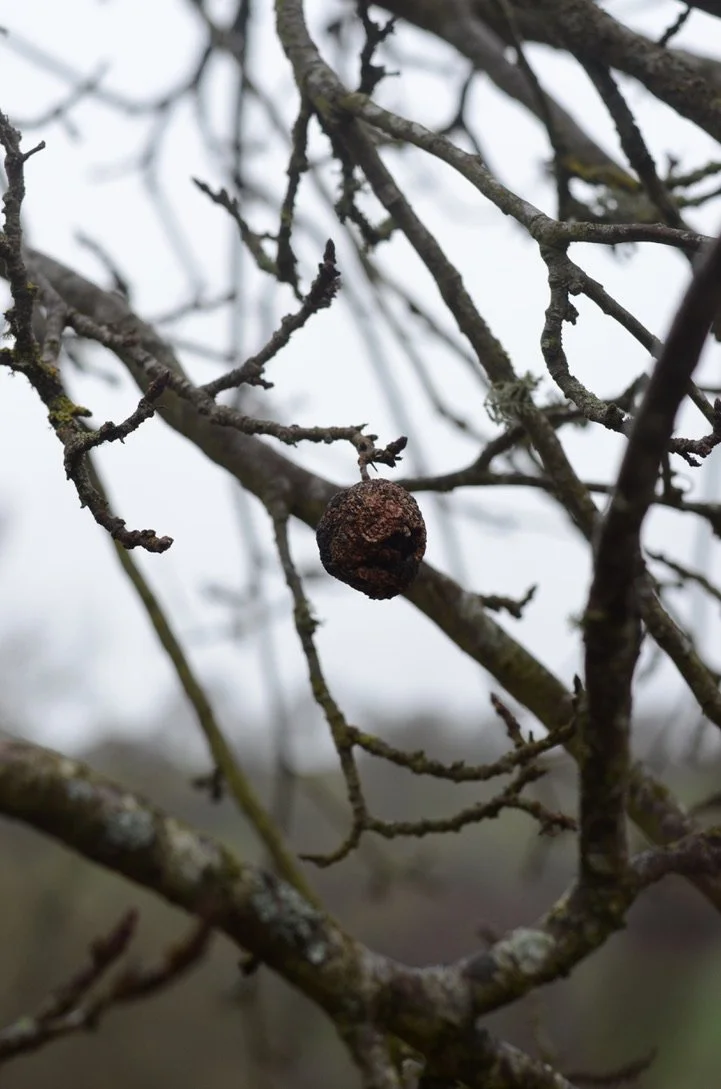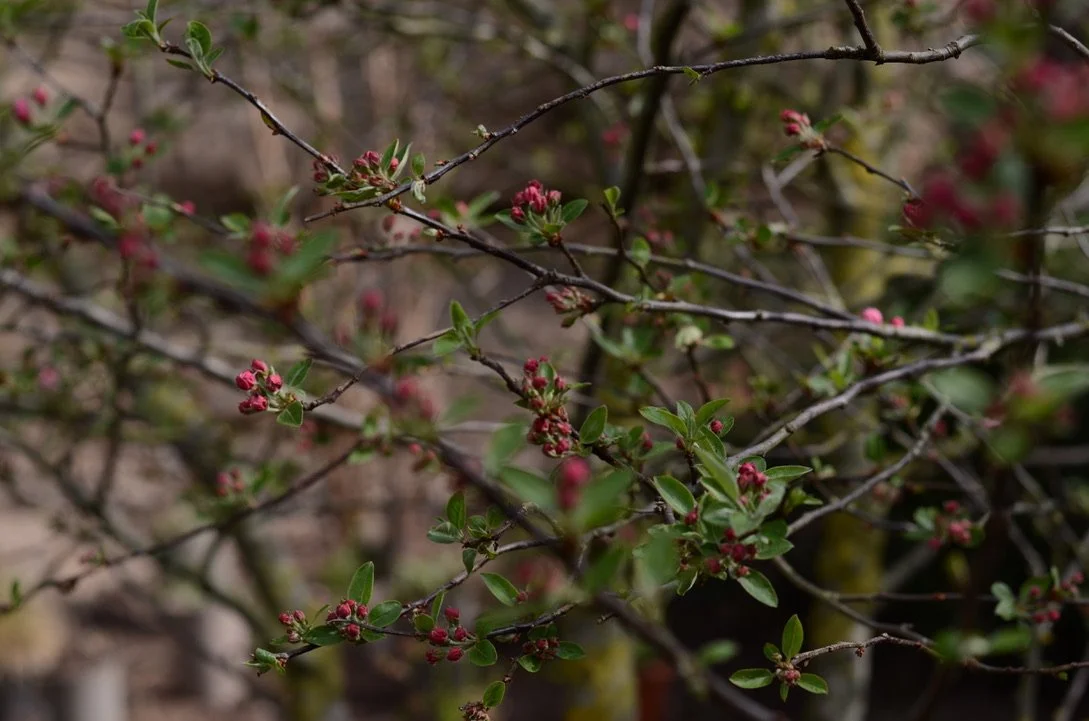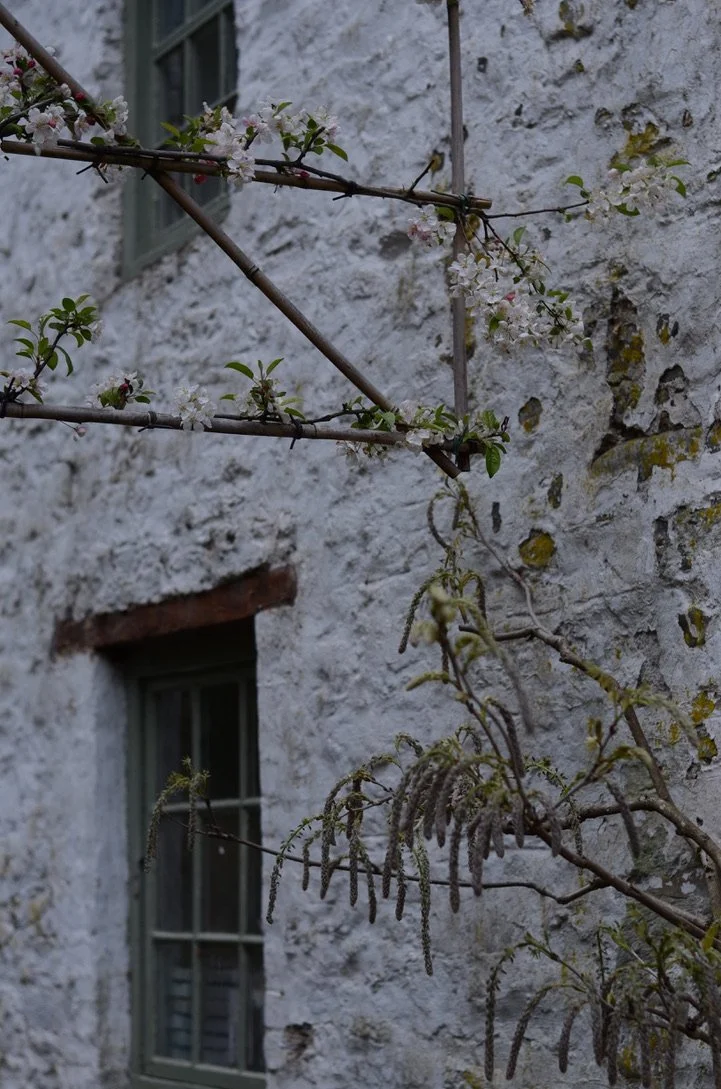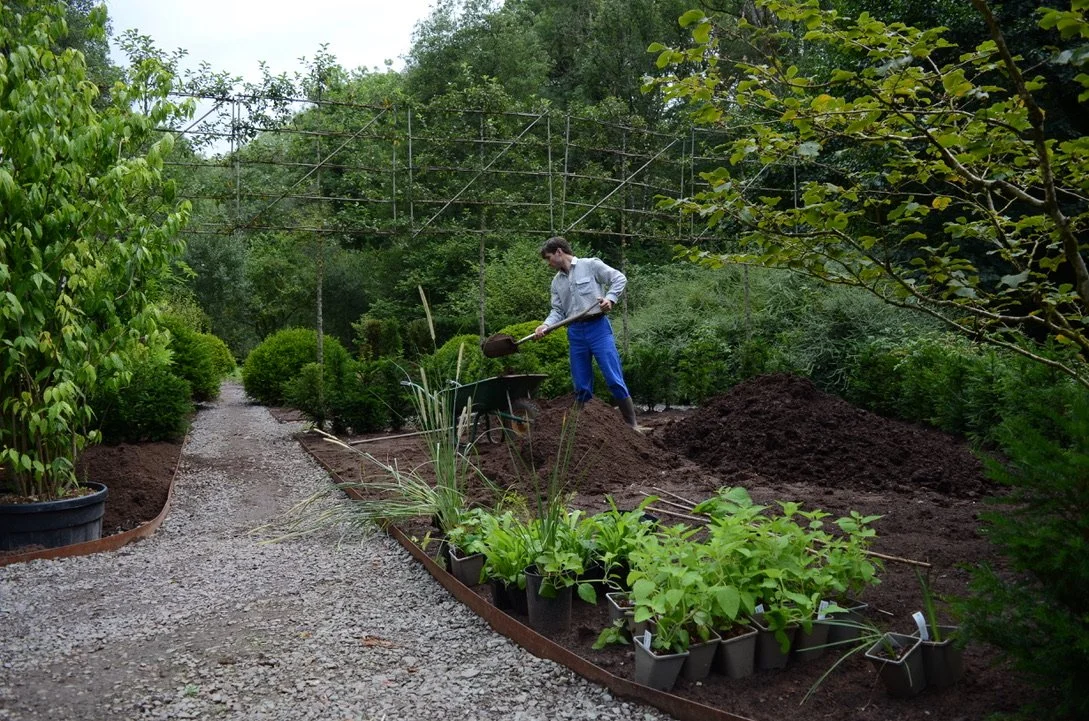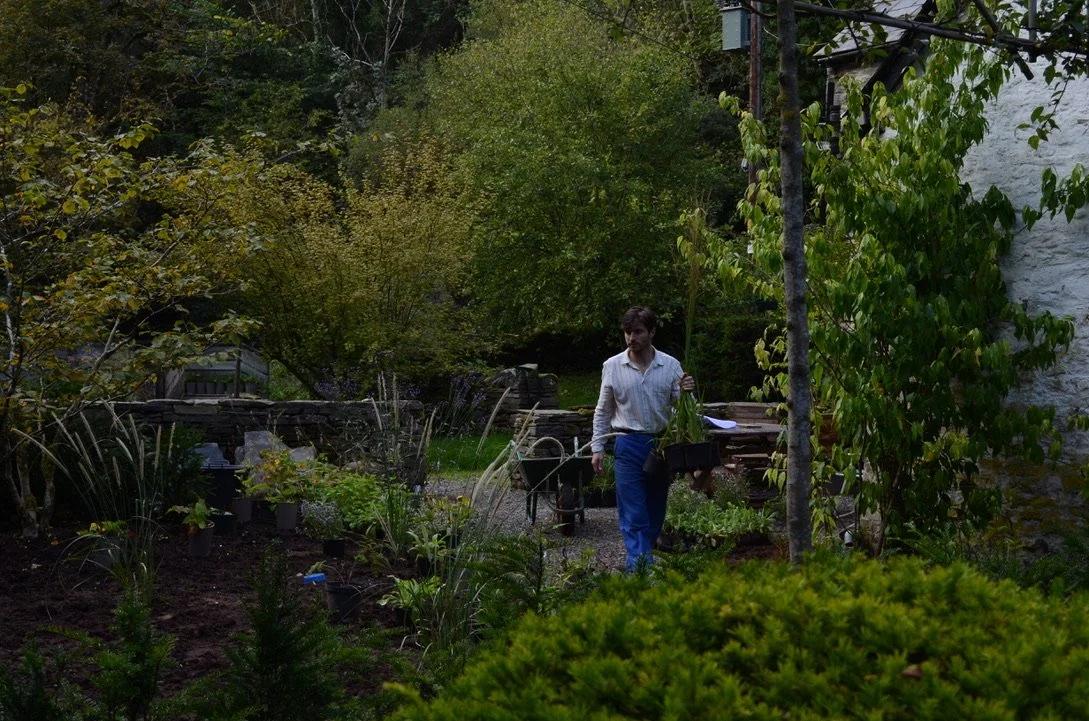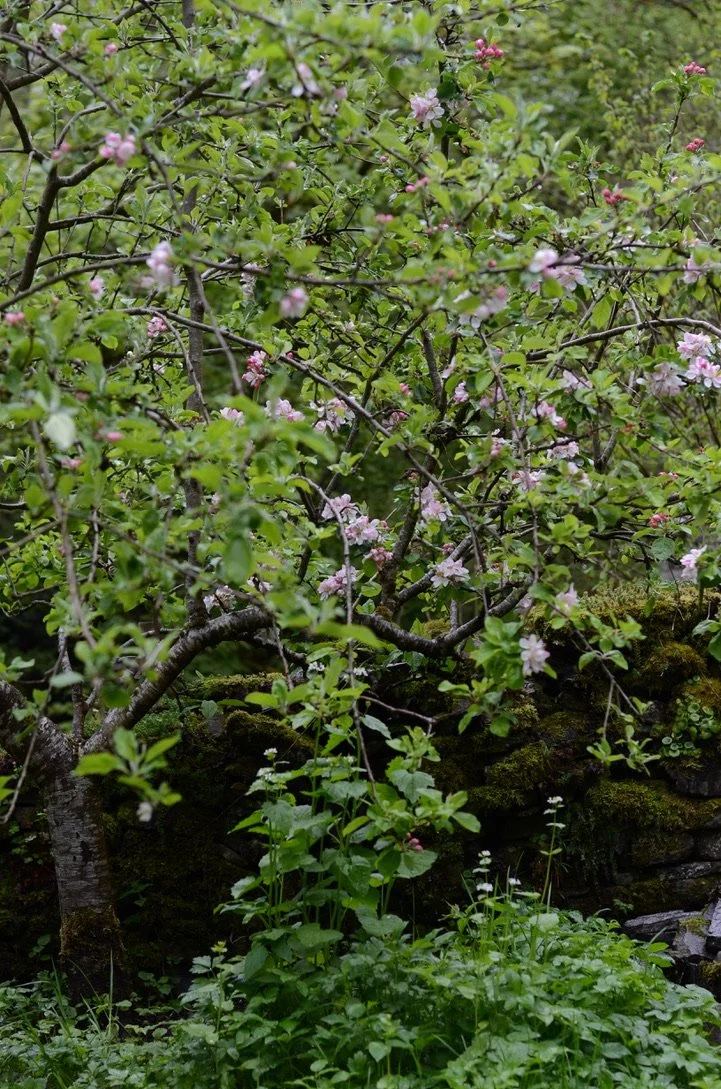MALUS
Iris ‘sparkling rose’
The woodland that lies upstream from the property has been a favourite place to explore, its character defined by the steep banks either side that roll down to the waters edge, a peaceful space that on closer inspection is alive and full of intrigue.
It was on that first visit that we stumbled across a pure wild Malus Sylvestris, although its greyish brown flecked bark wasn’t showy, its irregular shape and wide spreading canopy unassuming as it sat gnarled and slightly twisted amongst the Cratagous, that we noticed the parched faded fruits that remained from the year passed. One could only imagine how it would delicately infuse the woodland with romance and informality come mid May, a foragers delight hidden from sight, to stumble on something that has become increasingly rare within the landscape, a tree to be visited and appreciated each year.
Initial planting plan
Centuries of human selection and sequencing have produced thousands of apple cultivars that have been domesticated from the Asian M. sieversii, reshaping the smaller sour tasting fruits into larger, sweeter, and more desirable tasting apples. Wild apple is regarded as threatened in several European countries because of hybridisation and lack of regeneration. The wild apple tends to be incredibly resilient and naturally found scattered in gaps or at the edge of woodlands, where its weak competitive nature and high light requirements are granted and often found as individuals or in small groups. We are lucky to have another solo M. Sylvestris that lies in an open field above the property used for pasturage. It had blown over most probably from a strong wind and resprouted as a 'phoenix tree’, a will to survive and Its character made more unique in doing so.
M. Evereste
Preparing the planting beds, top soil and horse mature.
Molinia caerulea 'Transparent'
the apprentice.
Over the past couple of years we have become increasingly fascinated by Malus, perhaps it’s their versatility? We are always searching for ways to create a language that can be translated throughout our gardens, a species that can be used to shape different spaces, whether it be a multi-stem, pleached, espalier, fan trained or Corden, a standard, half standard or bush form and the choice of rootstock that can personalise it to fit with a specific sized garden. Apples have this quality, to make a space feel ornamental or traditional, gnarled and wild or simply a species to complement alongside other natives. Its the opportunity to plant a tree that was one of the primary ancestral genomes, a species such as a M. Sylvestris and adding to that depth with a M. Domestica and more ornamental varieties such as ‘Evereste’ and ‘Red sentinel’. It is a combination that can provide a language and connection between the landscape and the more cultivated garden.
When selecting the species of trees that would inhabit the garden we understood quite quickly that we wanted to provide a valuable response to those found in the surrounding landscape. We wanted them to portray a relaxed understated character, but one that aired on the ornamental side, especially closer to the house. Malus will become a tree that is scattered throughout the garden, their forms adapting to shape the individual spaces they occupy. Areas that require a more pared up aesthetic comprise of a more cultivated variety, where as areas that can afford a more natural character move closer to its major progenitor, further away from the property and cusping into the landscape where we will be adding to the woodland over the coming years to regain its presence.
To quote Henry Thoreau “The flowers of the apple are perhaps the most beautiful of any tree's, so copious and so delicious to both sight and scent.”
